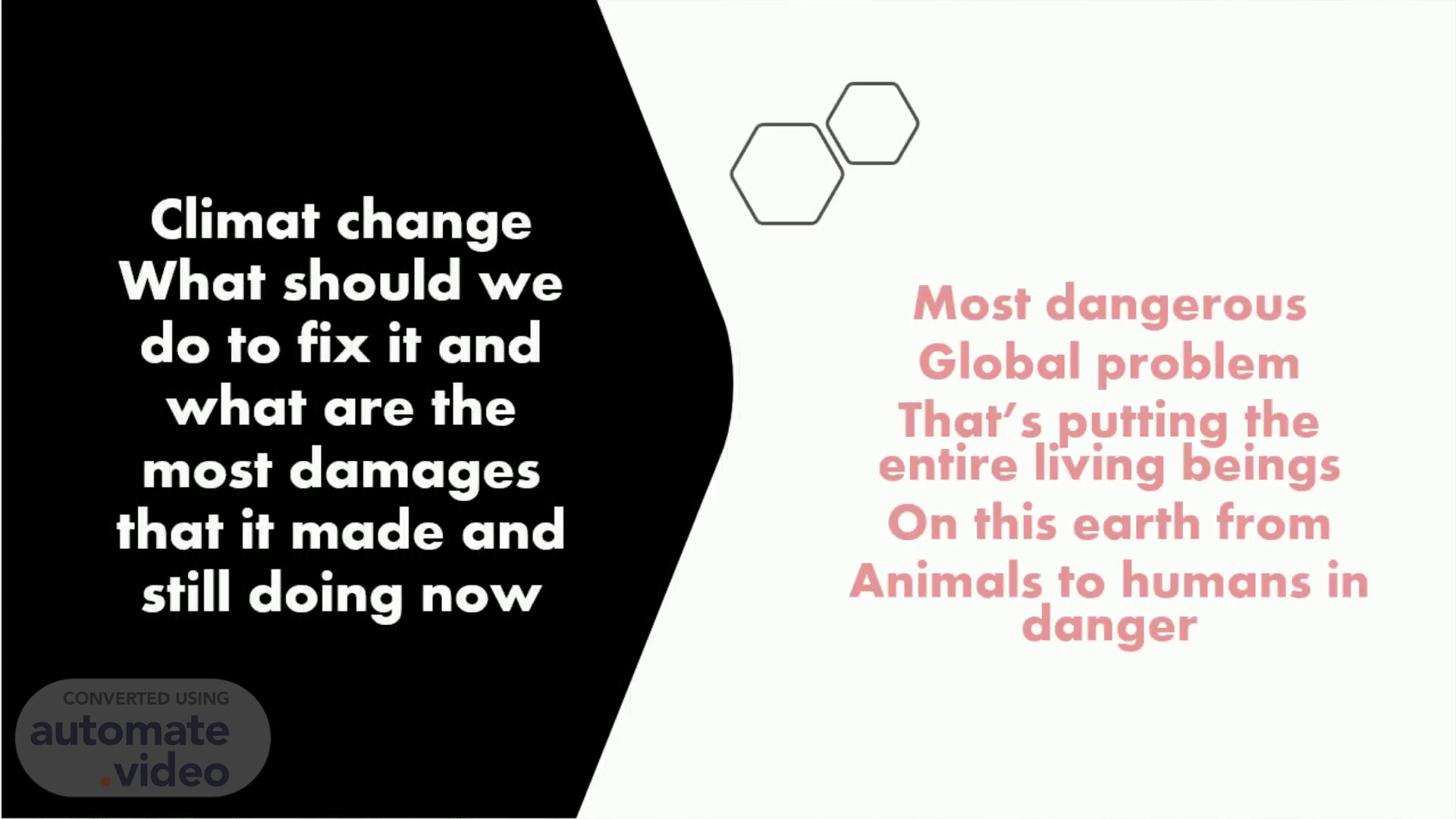
Climat change What should we do to fix it and what are the most damages that it made and still doing now
Scene 1 (0s)
Climat change What should we do to fix it and what are the most damages that it made and still doing now.
Scene 2 (15s)
How it started. On 23 June 1988 climate change first hit the headlines when NASA climatologist James Hansen testified before the US Senate: “The greenhouse effect has been detected, and it is changing our climate now,” he warned. That was a year of droughts and heat waves in the US, with severe fire in the Amazon and Yellowstone. The Intergovernmental Panel on Climate Change (IPCC) was created..
Scene 3 (39s)
But despite the long public history of this phenomenon—and its even longer scientific history, going back at least a century—two ideas have been slow to take hold. First, climate change is not an environmental problem, but a global one, threatening the habitability and survival of this planet as we know it. Second, it is not a future prediction; as Hansen warned, it is happening now..
Scene 4 (59s)
Effects of the Global Warming. Increase in average temperatures and temperature extremes Ice melt Plants and animal.
Scene 5 (1m 11s)
Ice melt. One of the primary manifestations of climate change so far is melt. North America, Europe and Asia have all seen a trend toward less snow cover between 1960 and 2015, according to 2016 research published in the journal Current Climate Change Reports. According to the National Snow and Ice Data Center, there is now 10 percent less permafrost , or permanently frozen ground, in the Northern Hemisphere than there was in the early 1900s. The thawing of permafrost can cause landslides and other sudden land collapses . It can also release long-buried microbes, as in a 2016 case when a cache of buried reindeer carcasses thawed and caused an outbreak of anthrax ..
Scene 6 (1m 42s)
A picture containing outdoor snow nature mountain Description automatically generated.
Scene 7 (2m 13s)
Application, map Description automatically generated.
Scene 8 (2m 42s)
increase in temperatures and an extreme one. One of the most immediate and obvious effects of global warming is the increase in temperatures around the world. The average global temperature has increased by about 1.4 degrees Fahrenheit (0.8 degrees Celsius) over the past 100 years, according to the National Oceanic and Atmospheric Administration (NOAA). Since record keeping began in 1895, the hottest year on record worldwide was 2016, according to NOAA and NASA data . That year Earth's surface temperature was 1.78 degrees F (0.99 degrees C) warmer than the average across the entire 20th century. Before 2016, 2015 was the warmest year on record, globally. And before 2015? Yep, 2014. In fact, 16 of the 17 warmest years on record have happened since 2001, according to NASA..
Scene 9 (3m 20s)
Chart Description automatically generated. Diagram Description automatically generated.
Scene 10 (3m 37s)
Plants and animals. A picture containing sky, nature, clouds, outdoor Description automatically generated.
Scene 11 (4m 19s)
FOR 2021. The floods in central and northern Europe during the summer of 2021 resulted in the death of 242 people. Credit Christophe Licoppe , European Commission.
Scene 12 (4m 32s)
the cause of those floods. Climate change originates from an increase in the terrestrial greenhouse effect caused by human activity, especially the burning of fossil fuels, which releases large amounts of CO2, the main gas responsible, into the atmosphere. For decades, climate models used by scientists have revealed that this global warming, the primary effects of which are an increase in average temperature, melting ice masses and rising sea levels, causes a disruption in the climate system resulting in an increase in extreme weather events..
Scene 13 (4m 58s)
Solution for this problem. Graphical user interface Description automatically generated with medium confidence.